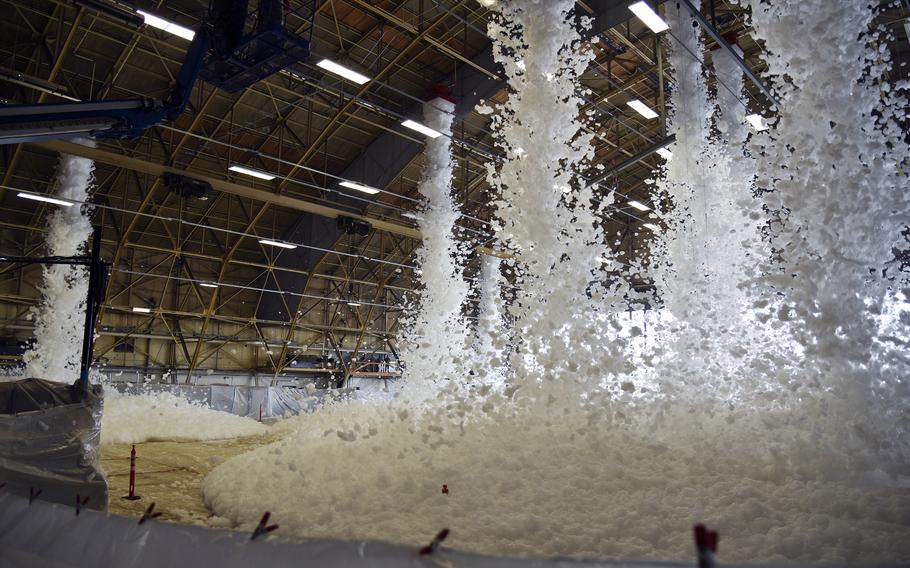
Congress gave the Department of Defense an Oct. 1 deadline to stop using aqueous firefighting foam to fight fires. That deadline was extended to Oct. 1, 2025. (Mackenzie Richardson/U.S. Air Force)
YOKOTA AIR BASE, Japan — The U.S. military has destroyed its last supplies of toxic firefighting foam at installations in Japan, according to the Tokyo-based command.
The aqueous firefighting foam stored at Yokota and two installations on Okinawa was incinerated at licensed disposal facilities in Japan, U.S. Forces Japan announced in a statement Thursday.
Congress in the 2020 National Defense Authorization Act gave the Department of Defense an Oct. 1 deadline to stop using the foam to fight fires. That deadline was extended to Oct. 1, 2025, according to the USFJ statement on its website.
“The US installations in Japan have met the deadline for legacy [aqueous firefighting foam] replacement,” the statement said.
The foam contains PFAS, a class of chemicals linked to an increased risk of certain tumors of the liver, testicles, breasts and pancreas, according to the American Cancer Society. The Environmental Protection Agency has said that no level of PFAS is safe in drinking water.
PFAS and its components, PFOS and PFOA, are also found in a wide variety of consumer products, including nonstick cookware and stain-resistant clothing and fabrics.
The synthetic compounds, sometimes called “forever chemicals,” accumulate in the body over time, according to the EPA.
The U.S. disposed of the remaining foam, which was no longer used for fighting fires, at Yokota, an airlift hub and USFJ’s headquarters in western Tokyo; and on Okinawa at Kadena Air Base and an Army petroleum, oil and lubricants depot, according to USFJ.
The Army depot will convert to water fire-suppression systems, according to the statement.
The military has replaced the toxic firefighting foam with a new formulation that does not contain PFOS and PFOA as a raw material.
U.S. installations are in the process of acquiring fluorine-free foam, or F3, which contains no PFAS compounds, according to USFJ.
“US installations will either change to the new F3 or convert the remaining fire systems to water suppression by the deadline,” the command’s statement said.
Japanese military facilities, including those co-based with U.S. forces, have disposed of all firefighting foams containing PFOS, USFJ’s statement said. Those installations include Naval Air Facility Atsugi, Marine Corps Air Station Iwakuni and Misawa Air Base.
“It is [the U.S. government’s] understanding these firefighting foams were replaced with products confirmed by the manufacturers not to contain PFOS as a raw material,” the statement said.
In recent years, Japanese municipal or prefectural authorities have complained of spills or suspected leaks of toxic foam or tainted wastewater at Misawa, Yokota, Marine Corps Air Station Futenma, Yokosuka Naval Base and the Army’s Sagamihara General Depot, among other sites.